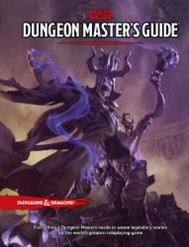 One of the more common pieces of advice to give new Dungeon Masters (and Game Masters) these days is that they should say “Yes” to their players.
One of the more common pieces of advice to give new Dungeon Masters (and Game Masters) these days is that they should say “Yes” to their players.
This is good advice. It comes from an understanding of the creative process: that you get more interesting results when you don’t shut down the creativity of the players.
At one of the sessions I ran at PAX Australia, a group of players defeated some corrupt soldiers that were planning to sell some elves to slavers. The intention in that the players kill the soldiers and then fight the slavers. My group subverted this a bit: they offered to sell the soldiers to the slavers! They explained that they were very rare (Elves? Common! Everyone sells you elves. We’ll sell you humans!), and the slavers agreed… going into their wagon to look for gold, and thus letting their guard down so the players could attack with surprise.
That’s the creativity from the players you want to encourage: thinking outside the box. Going in ways that you and the adventure writer didn’t envision. You’re not tied to one vision of events; you can go in any direction!
However, always saying “Yes” is tremendously problematic, because not every action the players think up is good for the group. That is, it’s bad for the actual social cohesion of the group. If I’m playing a diplomat and I’ve created my character that way, then a low-charisma character always butting in and ruining my negotiations isn’t amusing. It’s frustrating. If I can’t negotiate because the barbarian always attacks every NPC, why am I playing in the group?
This is what the DM needs to negotiate: the difference between saying “yes” to creative ideas, and saying “no” to socially disruptive ones.
There is a social contract inherent in every game. For most role-playing games, the mere fact that you’re playing indicates you wish to work together with the other players to achieve your goals. Being a good player requires you to understand your particular group’s desires and work with them. Some groups are fine with the barbarian attacking first every time. However, if you’re in a group that prefers to negotiate, then you shouldn’t be disrupting the game. Acting impulsively once or twice is fine, but if you’re always doing so, make sure the group is fine with that.
As the DM, you need to arbitrate between the conflicting desires of the players. I find this a particularly key skill in Organised Play games – at conventions, store games, and the like – where you may be playing with strangers. You don’t want a player to be left out, but likewise you don’t want them disrupting the rest of the group.
These days, when someone suggests an action that might prove significantly disruptive, I ask for a party vote as to whether they want it to proceed. I try not to let the acting player feel discriminated against, and normally they understand why I’ve asked for a vote. There are very rare times when a player is so disruptive I have to ask them to leave the group. This has only happened a few times in over thirty years of playing RPGs, but it’s never fun. It is, however, part of the responsibility you have when running a game: if one player is causing all the other players to not enjoy themselves, then you do need to act. Occasional disruptive acts are fine, but if a player is constantly disruptive, then you need to act.
Related to this is respecting the adventure the DM wants to run. If someone has spent a large amount of money on Rappan Athuk or Hoard of the Dragon Queen, or has spent many weeks designing their own adventure, then please let the DM know at the outset if you don’t actually want to play. Don’t get half a session into and then say “Let’s go to the Moonsea instead!” There does have to be negotiation between the DM and the players as to which adventure is played, but do understand that the DM does need to do a lot more preparation than the players to run sessions.
Key to all of this is that everyone in the group does need a shared understanding of the game you’re playing. As Tania Walker, one of my co-panelists at PAX Australia says, “All the players need to be committed to creating the same kind of fiction.” There needs to be some cohesion in the group. The point of saying “Yes” is to enable the creative process; you need to say “No” to aid the social cohesion of the group.

*applause* Fantastically stated, and so very true. This sounds like an exact conversation my husband (our DM) and I have had several times. He does a great job, and it sounds like you do as well.
Thanks so much for articulating this so eloquently. This may need to be read aloud to our players someday. 🙂
Lots of good ideas here. My first time DMing was a lot of “yes”s and not a lot of “no”s, so when i started to notice problems and began to say “no” more there was a little push back from the group. It’s a good idea to never fall into that root; my group stayed together, but it took awhile to get everyone back to good terms.
Thank you so much for this, it really puts my biggest frustration with ttrpg into a easy to read paragraph.